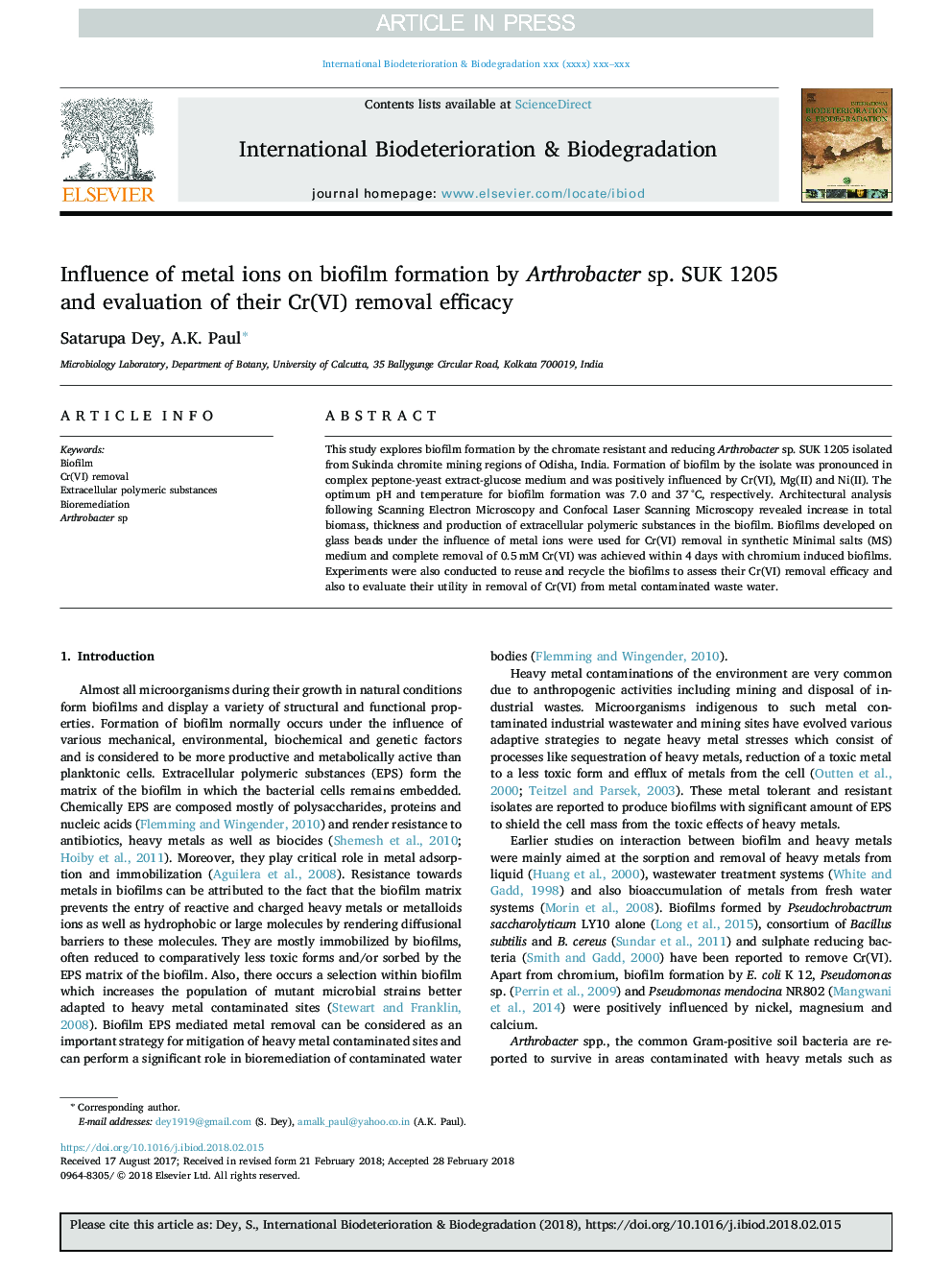| Article ID | Journal | Published Year | Pages | File Type |
|---|---|---|---|---|
| 8843745 | International Biodeterioration & Biodegradation | 2018 | 10 Pages |
Abstract
This study explores biofilm formation by the chromate resistant and reducing Arthrobacter sp. SUK 1205 isolated from Sukinda chromite mining regions of Odisha, India. Formation of biofilm by the isolate was pronounced in complex peptone-yeast extract-glucose medium and was positively influenced by Cr(VI), Mg(II) and Ni(II). The optimum pH and temperature for biofilm formation was 7.0 and 37â¯Â°C, respectively. Architectural analysis following Scanning Electron Microscopy and Confocal Laser Scanning Microscopy revealed increase in total biomass, thickness and production of extracellular polymeric substances in the biofilm. Biofilms developed on glass beads under the influence of metal ions were used for Cr(VI) removal in synthetic Minimal salts (MS) medium and complete removal of 0.5â¯mM Cr(VI) was achieved within 4 days with chromium induced biofilms. Experiments were also conducted to reuse and recycle the biofilms to assess their Cr(VI) removal efficacy and also to evaluate their utility in removal of Cr(VI) from metal contaminated waste water.
Related Topics
Life Sciences
Environmental Science
Environmental Science (General)
Authors
Satarupa Dey, A.K. Paul,
